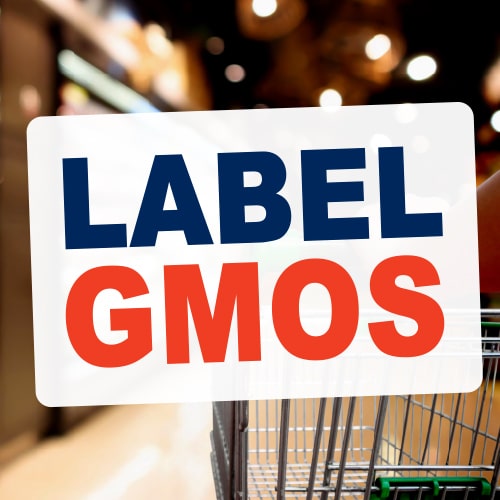February 25, 2013
Today, the Canadian Biotechnology Action Network responded to the newly released annual ISAAA (International Service for the Acquisition of Agri-Biotech Applications) report on the global adoption of genetically modified (GM also called genetically engineered) crops, arguing that, once again, ISAAA has presented numbers in a confusing way to bolster a misleading narrative that supports GM technology.
Though the full report “Global Status of Commercialized Biotech/GM Crops: 2012” is not immediately available (by mail order only), the Executive Summary was published on February 21 with an accompanying press release from ISAAA.(1)
“These numbers show an increase in GM hectares but they don’t confirm higher yields or higher incomes for farmers. Other studies show very different trends for these factors,” said Taarini Chopra of the Canadian Biotechnology Action Network.
While ISAAA reports that global GM crop hectares rose in 2012, CBAN points out that this increase was actually at a lower rate (6%) than over the past two years and is closer to the 2009 growth rate of 7%.(2) Additionally, 8.1 of the reported 10.3 million hectare increase in 2012 is due to increases in just three countries: Brazil, Canada, and Paraguay.(3)
Canada has the second biggest rate of increase in GM crop hectares from last year, after Brazil. ISAAA reports record GM canola hectares in Canada: 97.5% of Canada’s canola is GM.
“GM canola dominates in Canada partly because non-GM canola was abandoned early-on due to widespread GM contamination,” said Lucy Sharratt, also of the Canadian Biotechnology Action Network. “Canadians can’t track data on other GM crops because our government doesn’t gather these statistics,” GM corn, canola, soy and some white sugarbeet (for sugar processing) are grown in Canada.
The total number of countries growing GM crops in 2012 (28) was one less than in 2011, as Poland halted the planting of GM corn and Germany and Sweden stopped plantings of a GM potato as BASF took their GM potato off the market and halted all GM potato applications in Europe. Sudan and Cuba planted GM crops (Bt cotton and Bt maize, respectively) for the first time in 2012.
9 countries grow 97% of world’s GM crops. Together, the U.S., Brazil, Argentina grow 76.3% of the world’s GM crops. (4)
There are 8 GM crops grown around the world. The 4 major GM crops are corn, canola, soy, and cotton with some minor hectares of GM sugar beet, papaya, squash and alfalfa, mainly in the United States. All GM crops except the GM papaya and squash (virus resistant) are either herbicide tolerant and/or insect resistant.
While ISAAA reports the total acreage of GM crops in developing countries is now larger than in developed (by 4%), these are the same countries (with the exception of Sudan and Cuba), growing the same crops – GM corn, canola, soy and cotton – as all previous years and the numbers are still dominated by Brazil and Argentina.
“A simplistic growth curve or graph disguises some major real-world impacts of GM crops. Increasing hectares don’t necessarily indicate success of the crop, or equal benefits to farmers, they do however confirm corporate profit from seed sales,” said Chopra. “For example, the dominance of GM cotton in India is a function of seed market domination by Monsanto. The introduction of GM cotton in India is taking a heavy human toll as the crop has performed poorly for many small farmers.”(5)
“Farmers have no control over this technology, which makes us extremely dependent. I am convinced that farmers will ultimately abandon GM cotton because it wasn’t designed to serve our interests,” said Issouf Sanou, Coordinator of the Burkina National Federation of Farmer Organizations. Burkina Faso is growing a small amount of GM cotton.
“The introduction of GM crops into countries like Sudan should not be interpreted as a vote from small scale farmers,” said Sharratt.
-30-
For More Information: Lucy Sharratt, Canadian Biotechnology Action Network 612 241 2267 ext 25
Note to Editors:
(1) ISAAA’s Executive Summary and Press Release are available at www.isaaa.org
(2) ISAAA’s numbers show a 10-million-hectare increase in GM crops globally in 2012 over a 12m increase in 2011 and 14m in 2010, while growth in 2009 was at 9m hectares.
(3) Canada up 11.6 from 10.4, Paraguay up 3.4 from 2.8 to 3.4 and Brazil 30.3 to 36.6.
(4) See the background document “GM Crop Data Clarified: Interpreting the ISAAA report”Canadian Biotechnology Action Network, February 25, 2013.
(5) Details on GM cotton in India are available at www.cban.ca/cotton
- Background: GM Crop Data Clarified: Interpreting the ISAAA Report, February 25, 2013.
- Factsheet: Genetically Engineered Cotton





